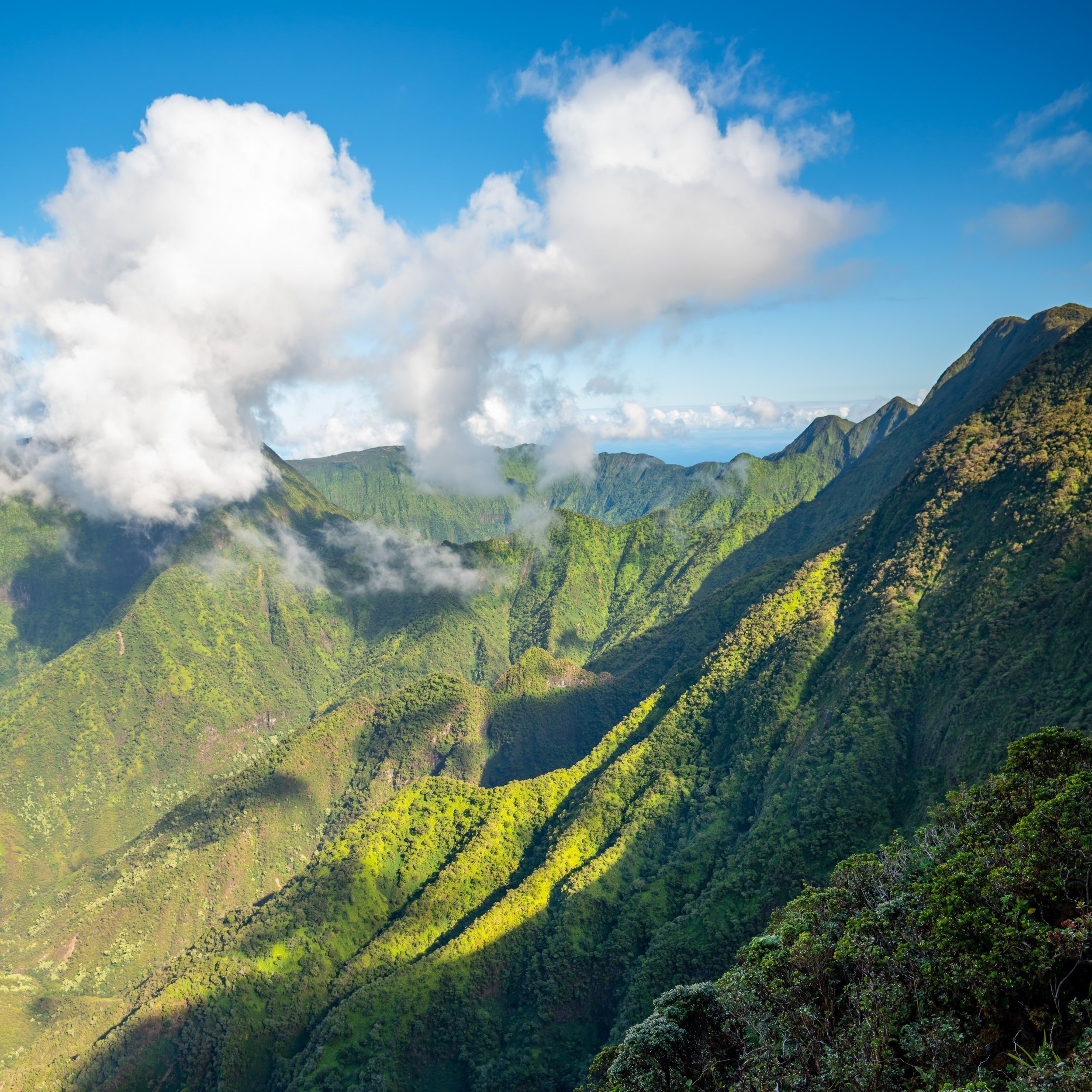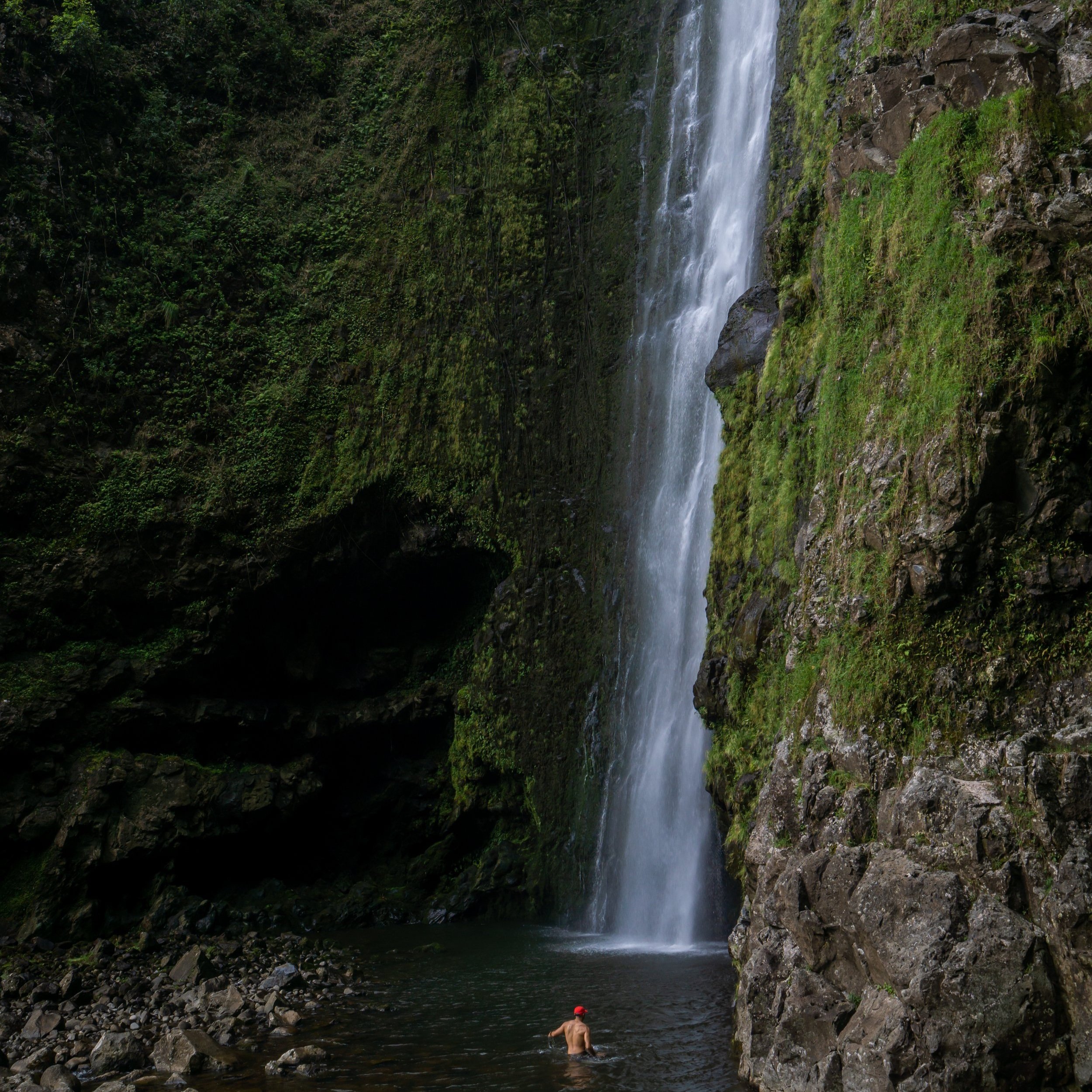Hiking the Moʻomomi Sand Dunes Trail to Kalani Beach on Molokai, Hawaiʻi
Distance (Roundtrip to Kapālauoʻa): 5.4 miles / 8.7 km
The Moʻomomi Sand Dunes Trail on Molokai is a remote coastal adventure along the North Shore of the island that passes a number of different beautiful beaches on the way out to the Moʻomomi Preserve, a protected, fenced-in area that is most similar to the Kaʻena Point Trail on Oʻahu.
That being said, this remote stretch of Molokai’s coastline is a vital habitat for a number of native Hawaiian plants, the endemic and endangered Hawaiian Monk Seal, and numerous nesting shorebirds—all of which rely on Moʻomomi for their survival.
I mention this to encourage all who are interested in hiking the Moʻomomi Sand Dunes Trail to be responsible. Unlike the more populated islands, following the applicable laws mentioned below—and staying safe while exploring remote places like Moʻomomi on Molokai—is, by and large, your responsibility!
Moʻomomi Sand Dunes Trailhead Parking
The Moʻomomi Sand Dunes Trailhead is located at the Moʻomomi Recreation and Cultural Park, which is only accessible with a 4x4 vehicle.
That being said, if you simply route the Moʻomomi Recreation and Cultural Park on Google Maps, your GPS may get you close but not all the way. I recommend having a satellite map on your phone loaded before you leave service, so that you can navigate visually for the last little stretch to the park.
Google Maps Directions: Moʻomomi Sand Dunes Trailhead
My Hawaiʻi Hiking Checklist
Hiking the Moʻomomi Sand Dunes Trail
From the Moʻomomi Recreation and Cultural Park, the Sand Dunes Trail simply follows the coastline on the best trail possible.
There are a few small turns throughout the hike, most notably once you’re in the preserve, but for the most part, the Moʻomomi Sand Dunes Trail should be fairly straightforward.
Initially, the trail will drop down into this little gulch, where you’ll want to climb back out on the far side to stay on the easiest path.
As I’m sure it’s obvious, there is no shade on the Moʻomomi Sand Dunes Trail.
For this reason, I highly recommend wearing a hooded sun shirt, like the ones linked below.
At about 0.5 miles (0.8 km), the Moʻomomi Sand Dunes Trail will merge with this 4WD road before branching off toward the coast shortly ahead.
At this next split, you can go in either direction to continue toward Kawaʻaloa Beach.
I went right along the coast, but if you’re looking for the easiest route, stay on the road until the beach.
Kawaʻaloa Beach
In my opinion, Moʻomomi Beach, shortly after the trailhead, wasn’t one to stop and enjoy, but Kawaʻaloa, about 0.7 miles (1.1 km) into the hike, is the first one worth slowing down for.
That being said, I would advise against swimming, as there is obviously no rescue services in the event of an emergency.
Moʻomomi Preserve (Predator-Proof Fence)
On the far side of Kawaʻaloa Beach, look for the best route possible in order to hike up to the predator-proof fence.
For those who aren’t familiar, Hawaiʻi has a handful of these predator-free enclosures in order to protect Hawaiʻi’s native nesting seabirds from the invasive rats and mongooses that prey on them. One of the most well-known enclosures is located at Kaʻena Point on Oʻahu.
Therefore, it’s very important to ensure the gate closes securely behind you whenever you pass through one of these enclosures.
Moʻomomi Preserve
On the far side of the fence, walk toward the water, which is where the Moʻomomi Preserve Trail continues.
Kalani Beach Junction
At the first split off the road, turn right.
The road that continues straight does not lead down to Kalani Beach, and you’ll likely have to fight through the thorny Kīawe trees to reach the beach if you miss this turn.
The trail down to Kalani Beach may not look too obvious, but there are some small trail markers indicating the right direction.
Kalani Beach
Typically speaking, Kalani Beach is the farthest that most hikers explore on the Moʻomomi Coastline.
However, if you’re curious like me, you can actually hike just past the predator-proof enclosure on the far side of the preserve.
Hawaiian Monk Seals
There is a real possibility that you will come across one of Hawaiʻi’s endemic and endangered Hawaiian Monk Seals along the trail.
Therefore, please be aware of the following guidelines before visiting:
If you see a Monk Seal, please use common sense and do not approach! Many visitors have been tracked down through social media videos and prosecuted for getting too close, touching, or harassing Hawaiian Monk Seals.
Be aware that Monk Seals come to the shoreline to rest and escape predation, meaning that if someone were to scare one back into the water, the seal is again exposed to the risks of predation from sharks.
Finally, feel free to stop, take photos, and enjoy them, but do so from a distance. NOAA and Hawaiʻi’s Department of Land and Natural Resources (DLNR) recommend at least 50 ft. (15.2 m) of distance.
If you’re going to hike through the predator-proof fence on the far side, I recommend staying on the beach as long as possible.
I say this because if you start hiking up the dunes to the left, it’s very likely that you’ll have to navigate your way back to the gate past some thorny Kīawe trees.
Predator-Proof Fence
On the far west side of the Moʻomomi Preserve, you can hike up to another west-facing viewpoint that hikers seldom ever see.
Once past the fence, stay along the coast as much as possible, and the view will open up shortly ahead.
Kapālauoʻa
Kapālauoʻa is the farthest I recommend exploring, as the trail essentially stops at the far gate shown above.
On top of this, the coastline gets more and more remote the further you go, and there are no more beaches along the North Shore past Kalani.
Hiking Back
If you’ve come this far, I think it’s a toss-up regarding which way is the easiest route to return.
You could either hike back across Kalani Beach, which is definitely the shorter but slower-moving option across the sand, or you could hike around the perimeter of the predator-proof enclosure, which is longer in distance but faster-moving, as opposed to walking on the beach.
I’d say it’s a matter of personal preference, but the fence option is a little hilly at first, and there will likely be a few Kīawe trees to scoot past.
Native Plants in the Moʻomomi Preserve
As mentioned previously, the Moʻomomi Trail and Preserve is an important ecological site for a number of endangered species, including this ʻAkoko shown below. Therefore, I ask that you please be careful where you walk.
Furthermore, some of the native plants that you can expect to see include ʻIlima, ʻAkoko, Naupaka, ʻĀhinahina, ʻĀkulikuli, and Nehe, to truly only name a few.
If you would like to learn more about these and other native Hawaiian plants from across the islands, I encourage you to scroll through my separate post.
Read My Separate Post: Native Hawaiian Plant Guide




